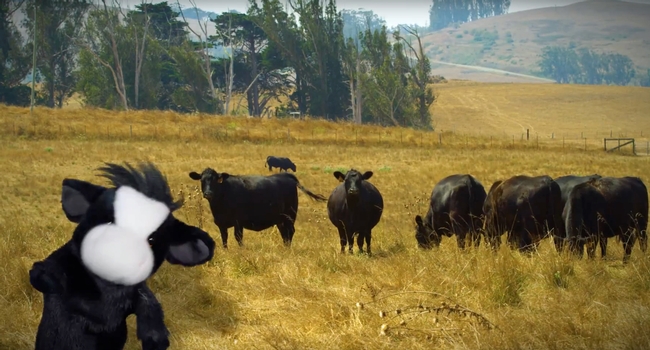Posts Tagged: Thanksgiving
Happy Thanksgiving!
It's Thanksgiving Day, and what better day to stop and be thankful for not only family and friends, but for the beauty around us. That would include...
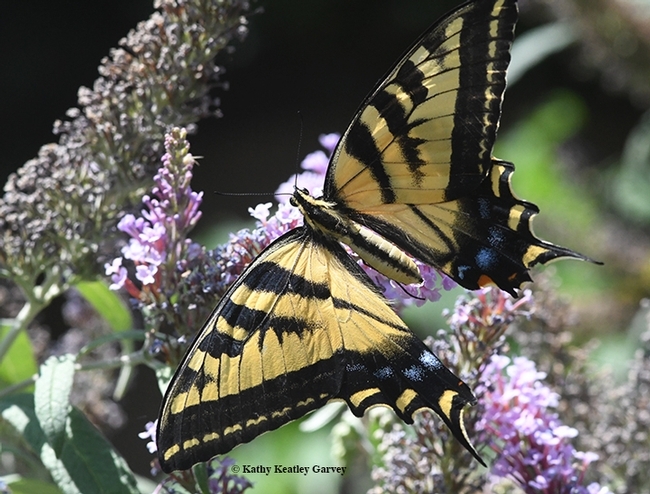
A Western tiger swallowtail (Papilio rutulus) nectaring on a butterfly bush (Buddleia davidii). (Photo by Kathy Keatley Garvey)
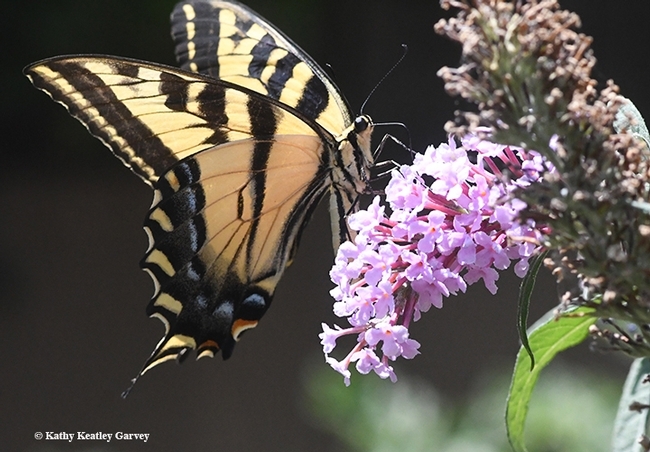
This gravid female Western tiger swallowtail (Papilio rutulus) can't get enough of a butterfly bush (Buddleia davidii). (Photo by Kathy Keatley Garvey)
Lady Beetles: The First Ladies of the Garden Having a Ball
See those red spots on your milkweed seed pods? Lady beetles (aka ladybugs or "garden heroes") are feasting on aphids. And they're having a...
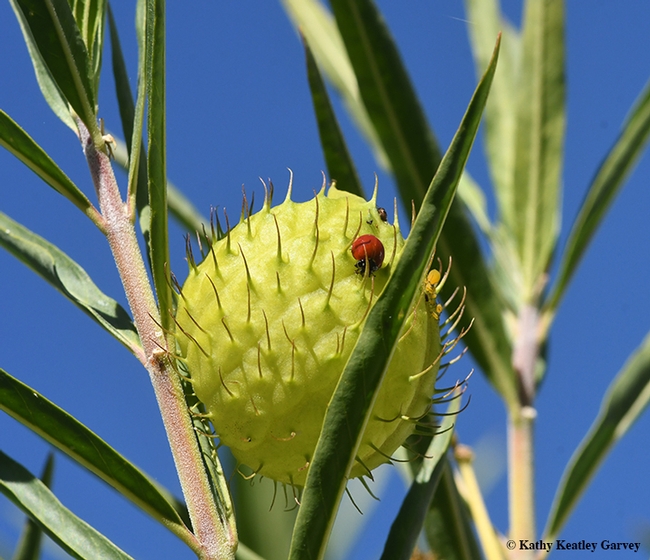
A lady beetle feasts on aphids on a milkweed plant, Gomphocarpus physocarpus, also known as balloon-plant milkweed or hairy balls. Note the spiky hairs. (Photo by Kathy Keatley Garvey)
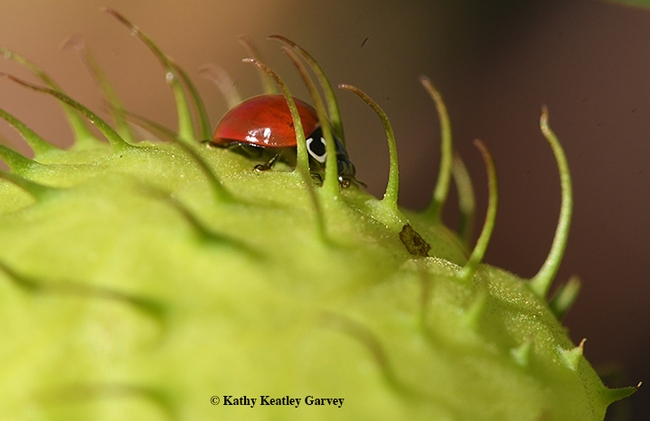
Peek-a-boo? Or peek-a-beetle? A lady beetle, resplendent in red, crawls through the spiky hairs of milkweed seed pods. (Photo by Kathy Keatley Garvey)
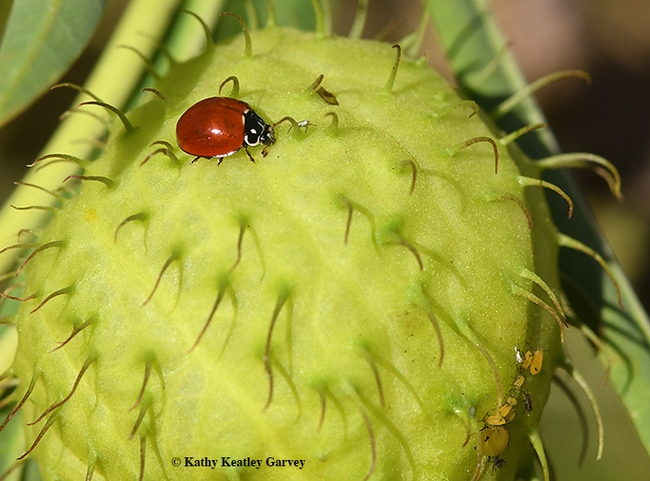
Hurry! A lady beetle snags aphids on a milkweed seed pod, while other aphids try to escape (far right). (Photo by Kathy Keatley Garvey)
Videos show hikers how to avoid Black Friday stampedes on park trails
While Americans traditionally beat a path to the malls the day after Thanksgiving, many opt out of shopping on Black Friday to enjoy the outdoors. In regional parks and other open spaces, hikers may encounter crowds of a different sort – cattle grazing with their calves. A 1,200-pound cow blocking the path can be daunting.
With a little patience and understanding, people who hike, bike and horseback ride can coexist peacefully with the cattle, according to Sheila Barry, UC Cooperative Extension livestock and natural resources advisor in Santa Clara County.
For happier trails, UC Agriculture and Natural Resources has produced a series of videos that show hikers how they can amicably share open space with their beefy neighbors. In a two-minute video, a black cow puppet with a furry white face describes how to politely coax cows to moo-ove aside without spurring a Black Friday stampede.
“We wanted to produce videos that are entertaining as well as informative,” Barry said.
The cow pun-filled video also describes the ecosystem services cattle provide by consuming nearly their body weight in plants. By grazing, cows manage the vegetation, reducing wildfire fuel, increasing water capture and promoting the diversity of native grasses and wildflowers.
In “Sharing open spaces with livestock,” the UC Agriculture and Natural Resources livestock experts give four simple tips for safely sharing open space with cows on the trail:
- Keep moo-ving and speak in a normal tone. Sudden movements and loud noises may surprise cows.
- Approach cows from the side or front. They find it udderly unnerving to have someone sneak up from behind, the bovine blind spot.
- Steer clear of getting between a protective mother and her calf.
- If you need to move a cow, step slowly into its flight zone. Invading the animal's “personal space” will motivate it to mosey aside.
A second video, “Sharing open spaces with livestock when you have a dog,” gives advice for dog owners to keep their best friends safe around cows.
In a third video, “A year in the life of a cow,” the UC Cooperative Extension spokespuppet describes a typical year for a beef cow.
“The videos are a fun way to educate the public about grazing on rangelands,” said Stephanie Larson, UC Cooperative Extension livestock and rangeland advisor in Sonoma County.
The videos are based on the UC ANR publication “Understanding Working Rangelands,” authored by Barry and Larson, at http://ucanr.edu/shareopenspace.
Watch all three videos on UC ANR's YouTube channel:
Sharing open spaces with livestock https://youtu.be/Qd8LEGLDhaM
Sharing open spaces with livestock when you have a dog https://youtu.be/zzdGnfFwmcA
A year in the life of a cow https://youtu.be/znJbWknVXVg
Count Your Blessings--and Thank the Bees!
It's Thanksgiving. Count your blessings--and thank the bees. If your table includes pumpkin, cranberries, carrots, cucumbers, onions, apples,...
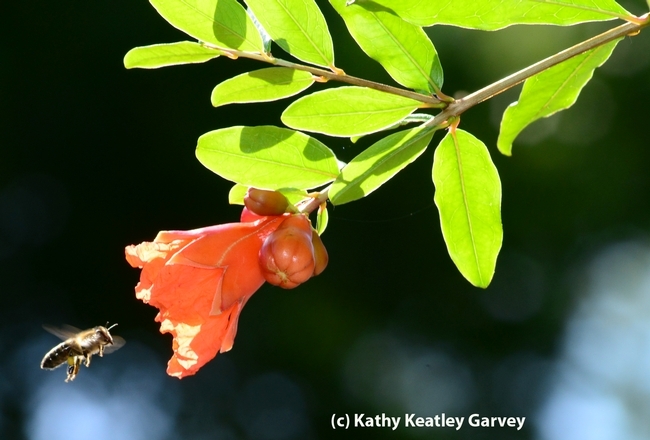
Honey bee heading toward pomegranate blossom on an 87-year-old tree. Pomegranates are among the 100 crops--from almonds to watermelon--pollinated by bees. (Photo by Kathy Keatley Garvey)
How Many Overwintering Monarchs in California?
There's good news and not-so-good news about the Western Monarch Thanksgiving Count in California. Last December the Xerces Society for Invertebrate...
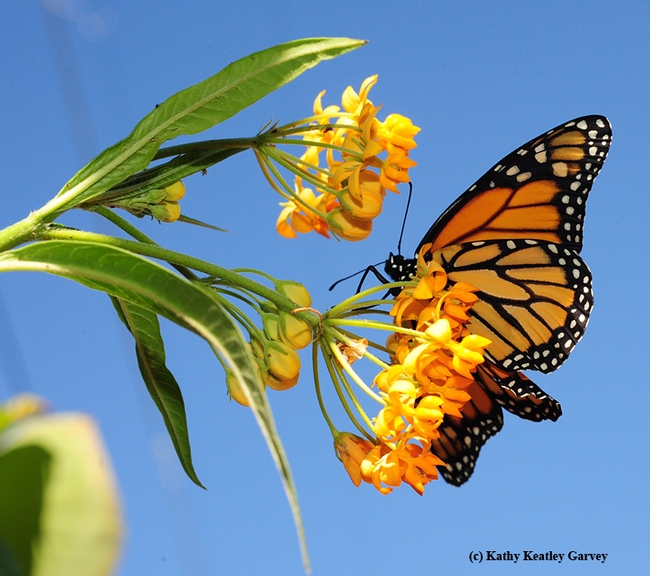
Monarch butterfly feeding on milkweed. (Photo by Kathy Keatley Garvey)
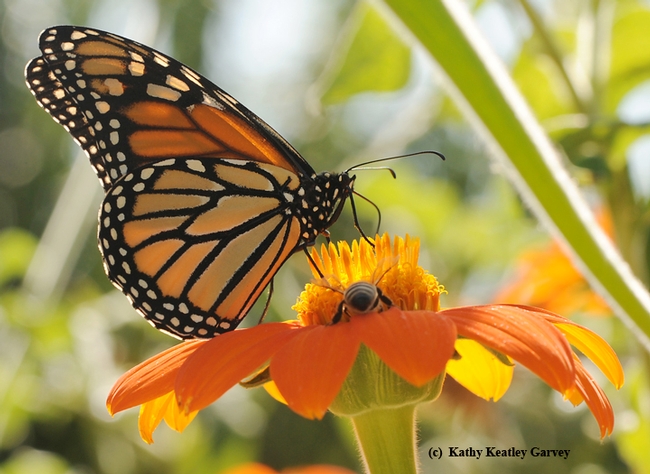
Monarch and a honey bee sharing a Mexican sunflower, Tithonia. (Photo by Kathy Keatley Garvey)
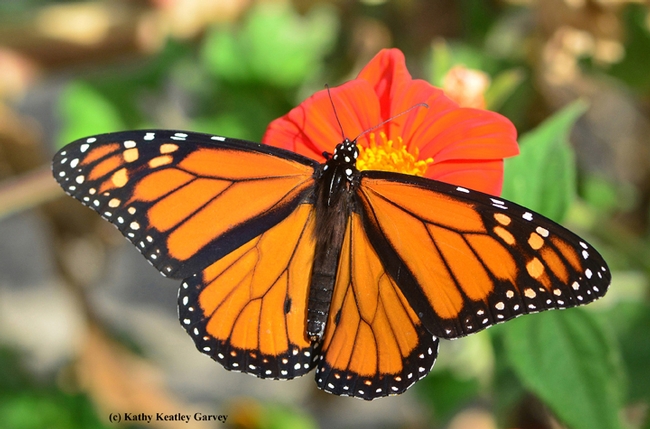
A male monarch on a Mexican sunflower, Tithonia. (Photo by Kathy Keatley Garvey)


